Getting into learning old time tunes with a three-finger technique can be a great way to improve your melodic runs and expand your repertoire, as there are an almost infinite number of wonderful tunes out there. Learning these tunes from fiddle playing can also be useful in figuring out how to transfer some of the idiosyncratic ornamentation onto your instrument, as well as employing phrases and rhythms that might help break you out of a typical bluegrass box.
That’s what I’ve done here, and there’s some tricky fingering in both hands with these pieces. I’ve included some scale sequence exercises to help you warm up and get into the melodic banjo head space, but you’ll still need to take the pieces slowly at first. The picking hand fingering on the tabs is only a suggestion, and you should do whatever feels comfortable and natural for you.
As in Scruggs-style playing, we often use rolls to approximate a long held note in the melody, as the banjo isn’t a sustaining instrument. This also gives us the opportunity to include some harmony notes beneath or above the melody, which can be a very effective way of linking the banjo to the guitar part, or in playing the tune solo, as with ‘Spotted Pony’ (below). Hopefully, the ideas in this article will inspire you to try out your own interpretations of some old time tunes.
With that explanation out of the way, here are some exercises, and then four of my favourite old time tunes that I’ve dug up over the years. Each tune video has the full arrangement, a slow solo banjo version, and a guitar backing – in case you get bored with our old friend the metronome. Happy picking!


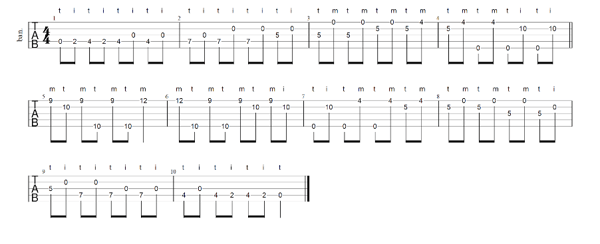
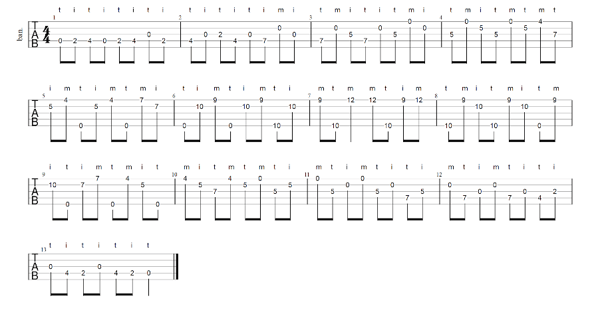
A great tune that’s also a song, a little like ‘Angeline the Baker’. The second time round the B part is great fun to play up the neck too!

A lovely A major fiddle tune that sounds far too happy for its macabre title (maybe whoever wrote this wasn’t a fan of Lincoln). There are a few big jumps in the A part, so make sure you make full use of the open strings just before the jump to move up the neck. It sounds good in G too if you don’t have a capo handy.
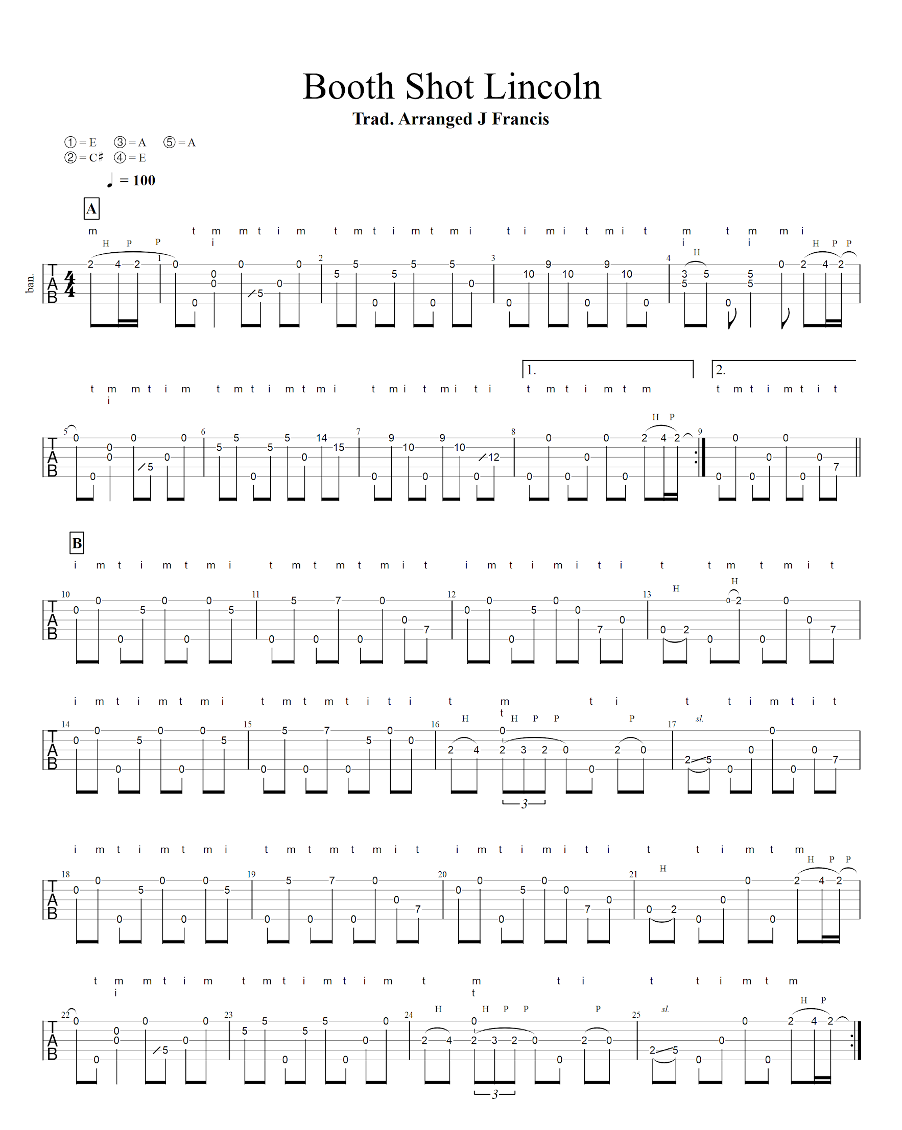
Playing in A minor, in open G tuning, is always great fun – the ringing high G of the 5th string gives an atmospheric, haunting sound. The unexpected move into A mixolydian in the B part is also very effective.
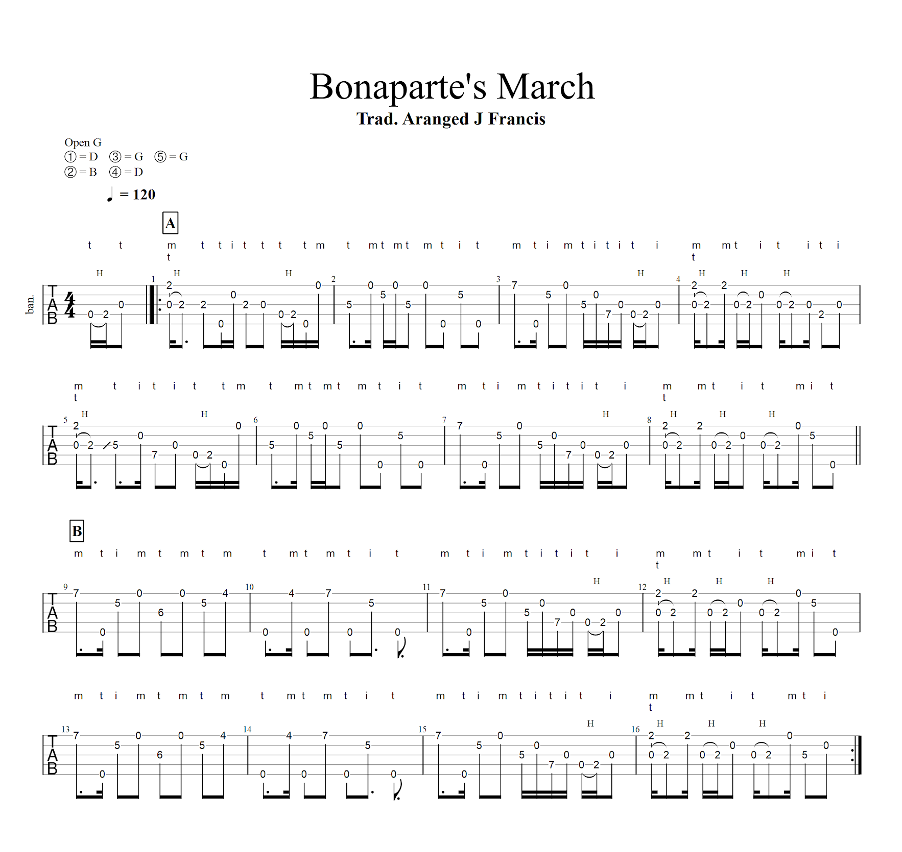
In this arrangement, I’ve tried to show how far you can go with the idea of providing your own harmony on the banjo, to the point where this piece is actually meant to be played solo. The chords I’ve implied, especially with the descending bass lines in the B section, could be reasonably called “cheeky”. Feel free to replace them with something more jam-friendly if you like.
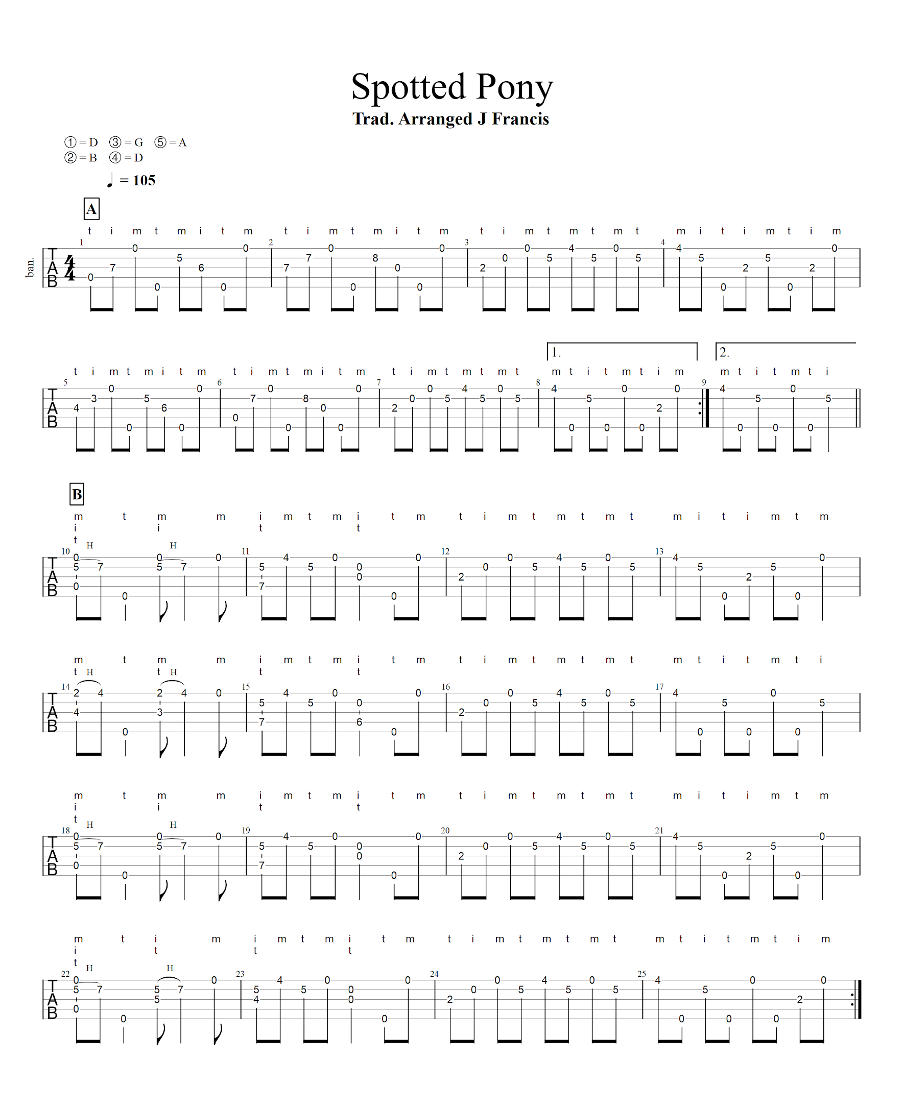
With a few chords under their belt, and perhaps a plectrum to hand, almost anyone can have fun strumming away on the banjo. In fact, as newcomers to the...
3733 Kenora Dr.
Spring Valley, CA 91977
COMMENTS